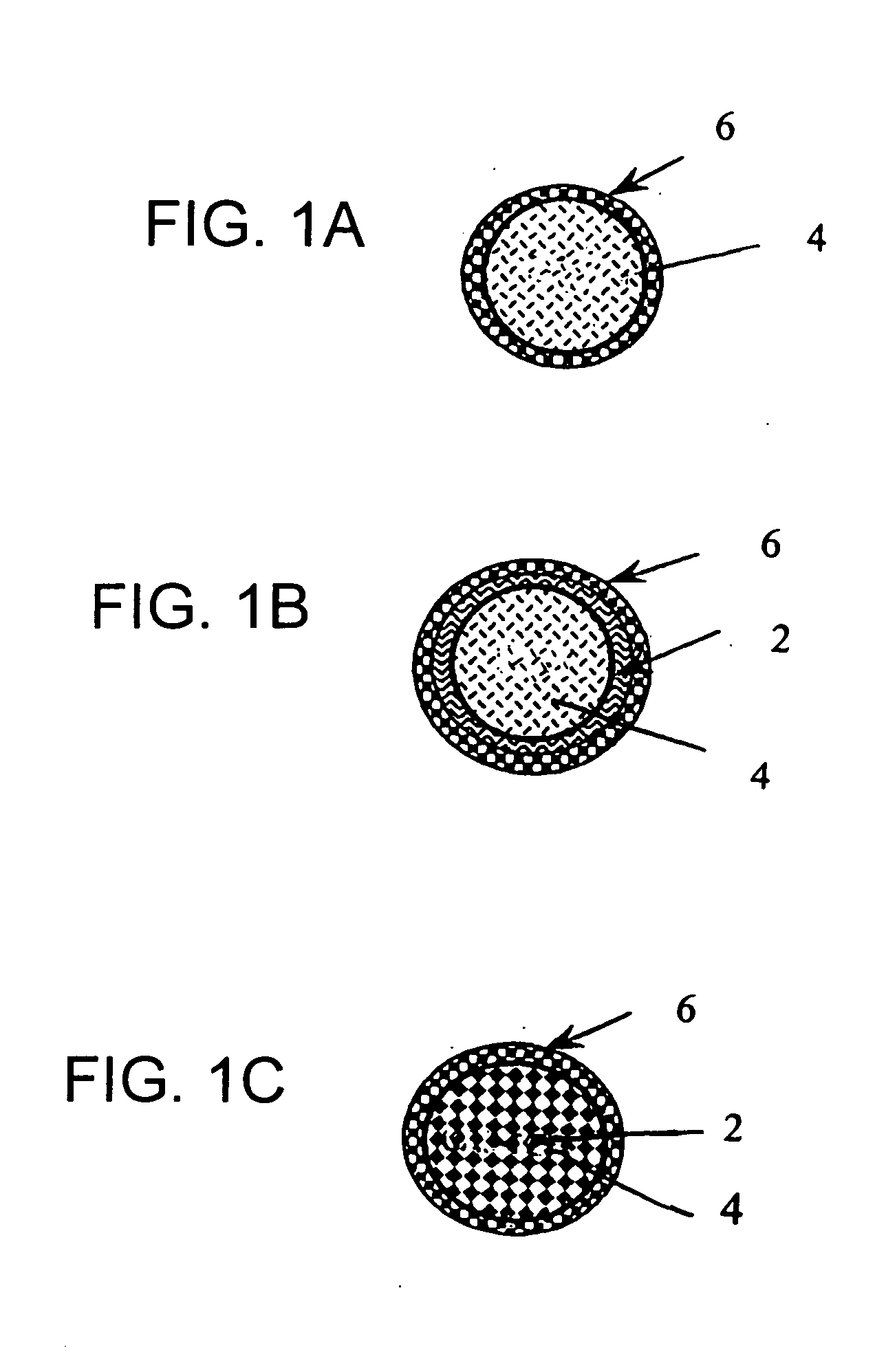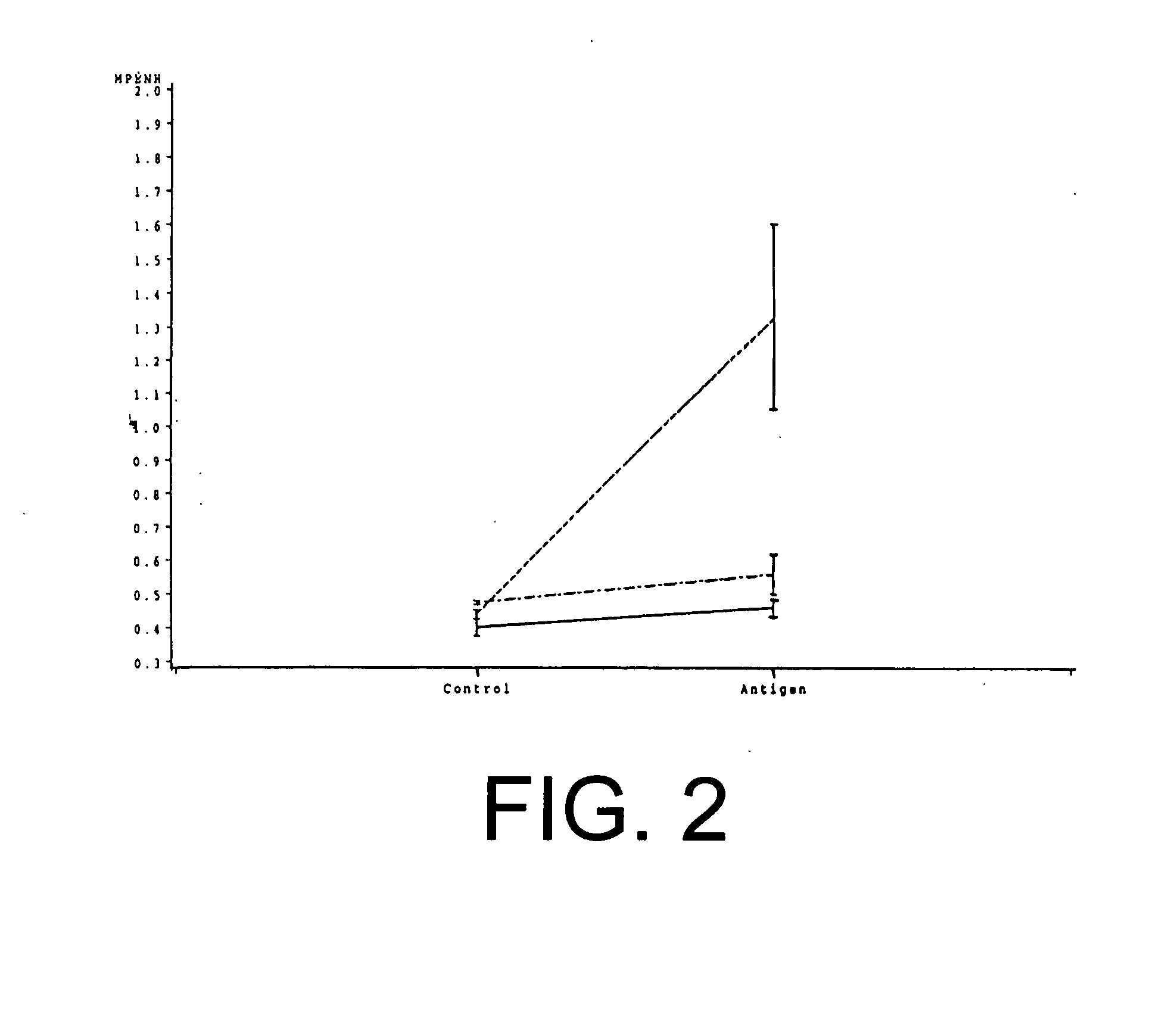Methods of manufacture and use of calcium phosphate particles containing allergens
a technology of calcium phosphate and allergens, which is applied in the field of manufacture and use of calcium phosphate particles containing allergens, calcium phosphate core particles, etc., and can solve the problems of increased incidence of allergic diseases, delivery, and effective and safe adjuvants
- Summary
- Abstract
- Description
- Claims
- Application Information
AI Technical Summary
Problems solved by technology
Method used
Image
Examples
example 1
[0040] A 12.5 mM solution of CaCl.sub.2 was prepared by mixing 1.8378 g of CaCl.sub.2 into 800 mL of sterile GDP water under aseptic conditions until completely dissolved, and the solution diluted to 1 L and filtered. A 15.625 mM solution of sodium citrate was prepared by dissolving 0.919 g of sodium citrate into 200 mL of sterile GDP water with mixing using aseptic techniques and filtered. A 12.5 mM solution of dibasic sodium phosphate was prepared by dissolving 1.775 g sodium phosphate into 1 L of sterile GDP water with mixing using aseptic techniques and filtered. All solutions were stored at room temperature.
[0041] The calcium chloride solution was combined with the sodium citrate solution and thoroughly mixed. Subsequently, the sodium phosphate solution was added with mixing. Turbidity appeared immediately as particles began to form. The suspension was allowed to mix for several minutes and was sampled for endotoxin testing using aseptic technique. Mixing was continued for abou...
example 2
[0043] The allergenic material was added to 75 ml or 12.5 mM calcium chloride, followed by the addition of 75 ml of 12.5 mM dibasic sodium phosphate and 15 ml of 15.6 mM sodium citrate similar to the particle formation methods described in Example 1. The solution was stirred until the final average particle size was less than 1,200 nm, as determined with a Coulter N4Plus Submicron Particle Sizer. The particle mixture containing entrapped was allergenic material was treated with cellobiose overnight and mixed again with 600 .mu.g allergen for 1 hour at 4.degree. C. After washing off unbounded allergen with PBS, the Allergen +CAP vaccine formulation was ready for use.
example 3
[0044] The efficacy of the particles prepared as described by Example 2 was tested as follows: Three groups of 6 rats were studied. Group 1--the Control group--was immunized subcutaneously with a commercial source (ALK, Belgium) of House Dust Mite (2.times.10 ug-HDM) allergen without adjuvant. Group 2 was immunized subcutaneously with a commercial source (ALK, Belgium) of House Dust Mite (2.times.10 ug-HDM) allergen formulated with aluminum hydroxide adjuvant. Group 3 was immunized subcutaneously with a commercial source (ALK, Belgium) of House Dust Mite (2.times.10 ug-HDM) formulated with BioSante Pharmaceuticals calcium phosphate adjuvant. The rats received two immunizations at one-week intervals, on days 0 and 7. After completing the series of immunizations, (which usually results in the manifestation of allergic reactogenicity to the allergen), HDM allergen was instilled intratracheally (IT) in each of the three experimental groups of rats to determine the relative degrees of al...
PUM
| Property | Measurement | Unit |
|---|---|---|
| Diameter | aaaaa | aaaaa |
| Diameter | aaaaa | aaaaa |
| Molar density | aaaaa | aaaaa |
Abstract
Description
Claims
Application Information
 Login to View More
Login to View More - R&D
- Intellectual Property
- Life Sciences
- Materials
- Tech Scout
- Unparalleled Data Quality
- Higher Quality Content
- 60% Fewer Hallucinations
Browse by: Latest US Patents, China's latest patents, Technical Efficacy Thesaurus, Application Domain, Technology Topic, Popular Technical Reports.
© 2025 PatSnap. All rights reserved.Legal|Privacy policy|Modern Slavery Act Transparency Statement|Sitemap|About US| Contact US: help@patsnap.com


